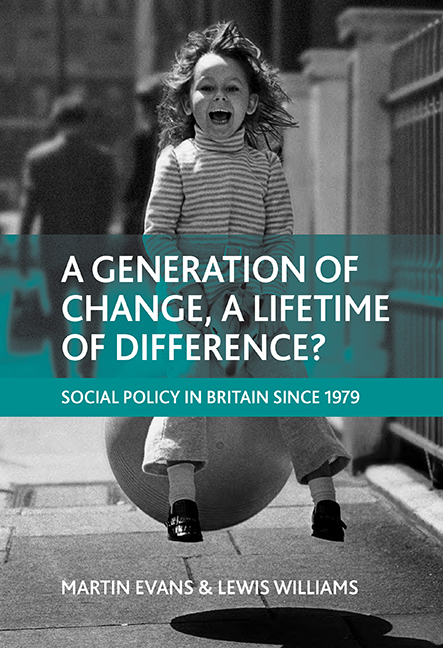fifteen - Conclusion: a generation of change, a lifetime of difference?
Published online by Cambridge University Press: 05 July 2022
Summary
The big picture
It is undeniable that there has been huge change in policy and underlying social and economic life since the 1970s and that our lives today are different in many ways. Clearly, 1979 stands out as a point when a momentous shift in British politics and in its social policy and welfare state occurred. Thirty years on and facing the fourth economic recession since the Second World War, we have tried in this book to look across the period, to put it in context and to measure some of the changes that have occurred in social policy. So much has been said about the ‘isms’ of Thatcher and Blair and so much emphasised about the differences between Old and New Labour that this focus on the rhetoric and ideology of change has resulted in little detailed analysis of what has actually changed and for whom. Of course, there have been historical descriptions of social policy change – the broad changes that we outlined in Chapter Two give but a whistlestop tour of ground that has been covered in well-written accounts by Timmins (2001), Glennerster (2000) and others. We have aimed to bring history up to date – to the end of 2008 at the time of writing. However, our main aim has not been solely an historical one, but one that joins the historical overview of policy change with the detail of what has happened to the rules of social policy, and of taxes and benefits in particular – of what has been said and what has been done. This approach has meant turning to the rules of policy rather than just the aims. Rather unfashionably, we have focused on a reconstruction of the rules of welfare rather than a deconstruction of its discourse. More importantly, we have then used those rules to compare analytically the outcomes of policy at the turning points of 1979, 1997 and 2008. This approach has enabled us to get beneath the ideology and rhetoric and to document what has changed and with what effect. But a focus on rules potentially misses the bigger picture and much of the changes to this bigger picture have been dominated by changing economics.
Information
- Type
- Chapter
- Information
- A Generation of Change, a Lifetime of Difference?Social Policy in Britain since 1979, pp. 305 - 316Publisher: Bristol University PressPrint publication year: 2009
